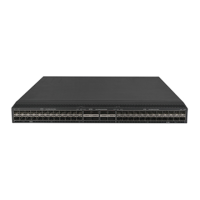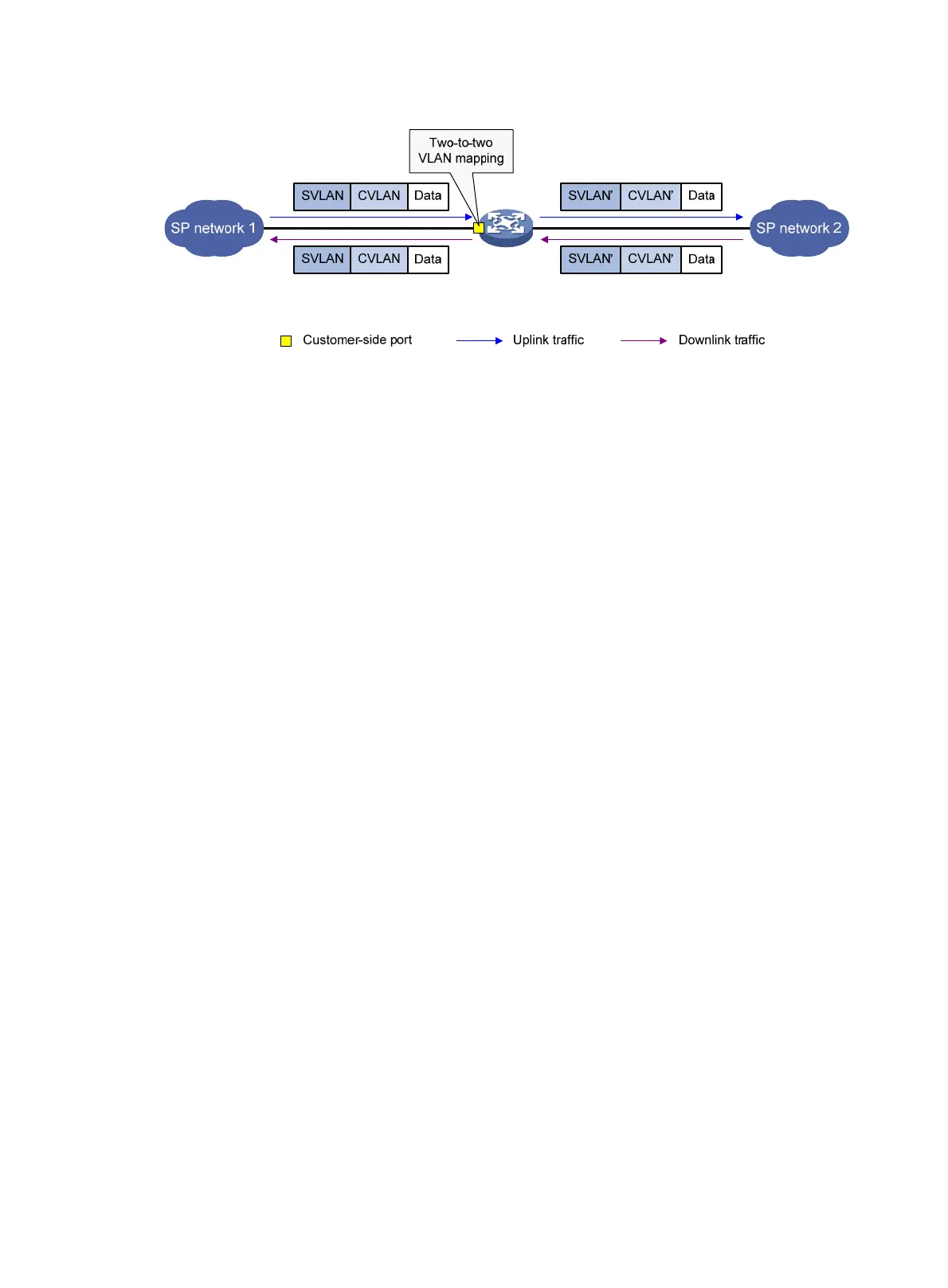6
Figure 7 Two-to-two VLAN mapping implementation
Restrictions and guidelines: VLAN mapping
configuration
To add VLAN tags to packets, you can configure both VLAN mapping and QinQ. VLAN mapping
takes effect if a configuration conflict occurs. For more information about QinQ, see "Configuring
QinQ."
To add or replace VLAN tags for packets, you can configure both VLAN mapping and a QoS policy.
The QoS policy takes effect if a configuration conflict occurs. For information about QoS policies, see
ACL and QoS Configuration Guide.
Do not configure VLAN mapping and Ethernet service instance-to-VSI binding on the same Layer 2
Ethernet interface or Layer 2 aggregate interface. Otherwise, these features might not take effect.
VLAN mapping tasks at a glance
Use the appropriate VLAN mapping methods for the devices in the network.
To configure VLAN mapping, perform the following tasks:
• Configuring one-to-one VLAN mapping
Config
ure one-to-one VLAN mapping on the wiring-closet switch, as shown in Figure 1.
• Configuring many-to-one VLAN mapping
Config
ure many-to-one VLAN mapping on the campus switch, as shown in Figure 1.
{ Configuring many-to-one VLAN mapping in dynamic IP address assignment environment
{ Configuring many-to-one VLAN mapping in static IP address assignment environment
• Configuring one-to-two VLAN mapping
Config
ure one-to-two VLAN mapping on PE 1 and PE 4, as shown in Figure 2, throug
h which
traffic from customer networks enters the service provider networks.
• Configuring two-to-two VLAN mapping
Config
ure two-to-two VLAN mapping on PE 3, as shown in Figure 2, which is an
edge device of
the SP 2 network.
Prerequisites
Before you configure VLAN mapping, create original and translated VLANs.

